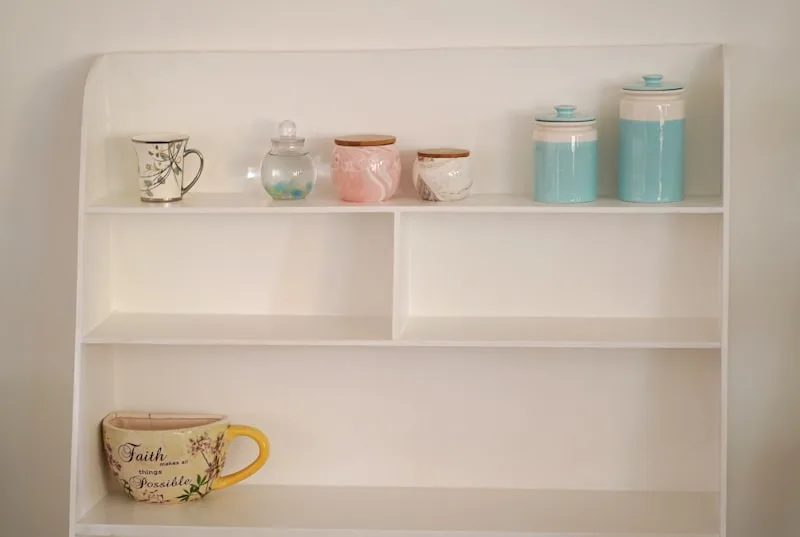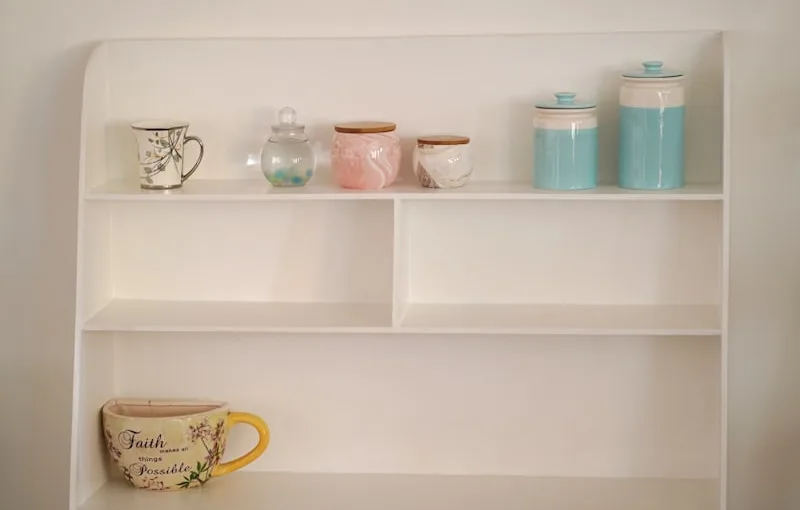First off, you’ll want to start with clean, prepped cabinets. Think of this as giving your cabinets a spa day. Remove any grease or grime with a good degreaser, and then sand them lightly to create a surface that the glaze can cling to. It’s like prepping a canvas before painting—every little detail matters!
Next, choose your glaze. You can go for a clear glaze to enhance the wood’s natural beauty or a tinted one to add a splash of color. It’s like picking the perfect outfit for a night out; you want something that complements your style! Once you’ve got your glaze, it’s time to apply it. Use a brush or a rag, depending on the look you’re going for. If you want a more rustic vibe, a rag can give you that soft, worn-in feel.
Now, here’s where the magic happens: after applying the glaze, wipe off the excess. This step is crucial! Think of it as polishing a diamond; you want to reveal the shine without overwhelming it. Let it dry completely, and if you’re feeling adventurous, you can add a second coat for a richer finish.
Transform Your Kitchen: A Step-by-Step Guide to Glazing Cabinets Like a Pro
First things first, gather your supplies. You’ll need a good quality glaze, a brush, some rags, and a bit of sandpaper. Think of this as your toolkit for a mini kitchen revolution. Once you’ve got everything, start by prepping your cabinets. This means cleaning them thoroughly and lightly sanding the surfaces. It’s like giving your cabinets a spa day—removing all the grime and making them ready to shine!
Next, apply the glaze. This is where the magic happens! Use a brush to apply a thin layer, working in small sections. Don’t worry if it looks a bit messy at first; that’s part of the charm. Just like painting a canvas, you want to create depth and character. After applying, wipe off the excess with a rag. This step is crucial—it’s what gives your cabinets that beautiful, aged look, almost like they’ve been kissed by time.
Now, let’s talk about drying time. Patience is key here! Allow the glaze to dry completely before adding a second coat if you want a more intense finish. It’s like waiting for a cake to bake; the anticipation makes it all the more rewarding. Once you’re satisfied with the look, seal it with a clear topcoat to protect your hard work.
And just like that, you’ve transformed your kitchen! It’s amazing how a little glaze can breathe new life into your space, making it feel warm and inviting. So, are you ready to roll up your sleeves and get started? Your dream kitchen is just a few steps away!
The Art of Glazing: Elevate Your Kitchen Cabinets with These Expert Tips
First off, think of glazing as the cherry on top of your cabinet makeover. It’s not just about color; it’s about depth and character. Picture your cabinets as a blank canvas. A well-applied glaze can highlight the intricate details of the wood grain, making those beautiful carvings pop like a masterpiece in a gallery. But before you grab that brush, prep work is key. Clean your cabinets thoroughly and consider a light sanding to ensure the glaze adheres perfectly.
Now, let’s talk technique. You can use a brush, sponge, or even a cloth to apply the glaze. Each method offers a different vibe. A brush gives you precision, while a sponge can create a soft, textured look. Think of it like choosing between a fine-tipped pen and a paint roller—both can create art, but the style will differ.
And don’t forget about color! A darker glaze can add a rich, vintage feel, while a lighter one can brighten up your space, giving it an airy, modern touch. It’s all about what vibe you want to create.
Finally, remember that practice makes perfect. Don’t be afraid to experiment on a scrap piece of wood first. It’s like trying on clothes before buying; you want to make sure it fits just right. So, roll up your sleeves and get ready to elevate your kitchen cabinets to a whole new level of fabulous!
From Drab to Fab: How Glazing Can Revitalize Your Kitchen Cabinets
Glazing is like giving your cabinets a refreshing facial. It’s a technique that adds a layer of color and depth, enhancing the natural beauty of the wood grain. Think of it as a stylish outfit for your cabinets—one that can make them pop without a complete overhaul. You can choose from a variety of colors, from rich espresso to soft white, allowing you to customize the look to fit your kitchen’s vibe.
Now, you might be wondering, “Is this a DIY project I can tackle?” Absolutely! With a little patience and the right tools, you can achieve stunning results. Start by cleaning your cabinets thoroughly, then apply a base coat of paint. Once that’s dry, it’s time for the fun part: glazing! Use a brush or cloth to apply the glaze, working it into the crevices to highlight the details. It’s like painting a masterpiece, and you’re the artist!
Glazing 101: Everything You Need to Know to Achieve a Stunning Finish
First off, glazing isn’t just for pottery; it’s a game-changer in painting and finishing furniture too. Think of it as the icing on a cake. You wouldn’t serve a plain cake, right? You’d want that sweet, glossy layer to make it irresistible. Similarly, a good glaze can transform a dull piece of furniture into a stunning centerpiece.
Now, you might be wondering, “How do I get started?” It’s simpler than you think! Start with a base coat—this is your cake. Once it’s dry, grab your glaze. You can buy premixed options or whip up your own by mixing paint with a clear medium. The key here is to keep it thin; you want that translucent effect, not a thick sludge.
When applying, use a brush or a rag, and don’t be afraid to experiment! Think of it like a dance; you want to move gracefully, blending and layering until you achieve that perfect look. And if you mess up? No worries! Just wipe it off and start again.
One of the best parts about glazing is the depth it adds. It’s like looking into a pool of water—there’s so much more than just the surface. You can create textures and highlights that make your piece pop. So, whether you’re revamping an old dresser or adding flair to a canvas, glazing is your ticket to a stunning finish that will leave everyone in awe.
Unlock the Secrets of Cabinet Glazing: Techniques for a Flawless Look
First off, what is cabinet glazing? Imagine it as a beautiful, translucent layer that enhances the wood grain and adds depth to your cabinets. It’s like putting on a pair of stylish sunglasses that make everything look cooler. The right glazing technique can transform ordinary cabinets into extraordinary focal points in your kitchen.
Now, let’s talk techniques. One popular method is the “wipe-on” glaze. Picture this: you apply a thin layer of glaze with a cloth, wiping away the excess to leave just the right amount in the crevices. It’s like painting a masterpiece where every stroke counts! This technique allows you to control the intensity of the color, giving you that perfect, custom look.
Another fantastic option is the “brush-on” glaze. This is where you can really let your creativity shine. Using a brush, you can apply the glaze more liberally, creating a textured effect that adds character. Think of it as giving your cabinets a unique personality—no two kitchens will look the same!
And don’t forget about the drying time! Patience is key here. Allowing the glaze to dry properly ensures that you won’t end up with streaks or uneven patches. It’s like waiting for a cake to rise; you want it to be just right before you dig in!

So, are you ready to unlock the secrets of cabinet glazing? With these techniques, you’ll be well on your way to achieving that flawless, eye-catching look that will have everyone asking, “Where did you get those cabinets?”
DIY Kitchen Makeover: Mastering the Glazing Technique for Gorgeous Cabinets
Glazing is like giving your cabinets a stylish outfit that highlights their best features. It’s a simple process that involves applying a thin layer of tinted finish over your painted or stained cabinets. This technique not only adds depth and dimension but also enhances the texture of the wood, making those intricate details pop. Think of it as putting on a pair of sunglasses that make everything look cooler!
So, how do you get started? First, you’ll want to prep your cabinets. Clean them thoroughly and sand them down a bit to ensure the glaze adheres well. Next, choose your glaze color—this is where the fun begins! Whether you want a rich espresso or a soft, creamy white, the choice is yours. Once you’ve got your glaze ready, it’s time to apply it. Use a brush or a cloth to work the glaze into the grooves and crevices of your cabinets. Don’t be afraid to experiment; it’s all about finding that perfect balance that suits your style.
Frequently Asked Questions
Can I glaze over painted cabinets?
Yes, you can glaze over painted cabinets to enhance their appearance and add depth. Ensure the paint is fully cured, then apply a glaze using a brush or cloth, wiping off excess to achieve the desired effect. This technique can highlight details and create a more sophisticated look.
How long does it take to glaze kitchen cabinets?
The time required to glaze kitchen cabinets typically ranges from a few hours to a couple of days, depending on the number of cabinets, the complexity of the design, and the drying time of the glaze. Preparation, application, and finishing steps all contribute to the overall duration.
What is the best type of glaze for kitchen cabinets?
The ideal glaze for kitchen cabinets is typically a water-based or oil-based polyurethane glaze. Water-based glazes are easier to clean up, dry quickly, and emit fewer fumes, making them a safer choice for indoor use. Oil-based glazes provide a durable finish and a rich, deep color but take longer to dry and require solvents for cleanup. Choose a glaze that complements your cabinet material and desired finish for optimal results.
What tools do I need to glaze kitchen cabinets?
To glaze kitchen cabinets, you will need a few essential tools: a high-quality brush or foam applicator for even application, a clean cloth for wiping excess glaze, painter’s tape to protect areas you don’t want to glaze, and a mixing container for blending the glaze. Additionally, having sandpaper for surface preparation and a clear topcoat for sealing the finish can enhance durability.
How do I prepare my cabinets for glazing?
To prepare your cabinets for glazing, start by cleaning them thoroughly to remove any grease or dirt. Next, sand the surfaces lightly to create a smooth base for the glaze to adhere. Ensure all dust is removed after sanding. If necessary, apply a primer to enhance adhesion and color uniformity. Finally, make sure the cabinets are completely dry before applying the glaze.
